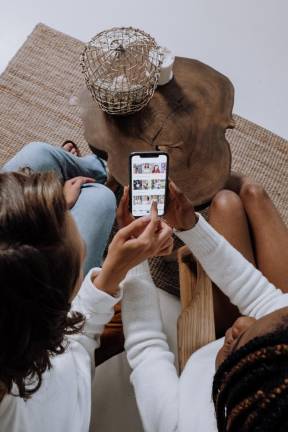TikTok and Eating Disorders

In many ways, the social media app TikTok has a culture of disordered eating. Videos of extremely thin girls go viral, and the comments all follow the lines of, “I’m not eating lunch today,” or “wish I was skinny.” Fitness and diet advice abounds, often from unreliable sources, and often encouraging toxic behaviors. Glow up videos flaunt weight loss, spurring comments that beg for tips. And “What I Eat in A Day‘’ videos parade arrays of salads, smoothies, and one piece of dark chocolate for dessert.
“What I Eat in a Day” videos are one of the many ways in which social media influencers’ daily lives are packaged into content, but they are among the most damaging. The videos are prolific on TikTok. They are composed of small clips of each of the creator’s meals and snacks for that day, complete with a cute filter and catchy music. “What I Eat in a Day’’ videos fall in with “Day in the Life” or “What’s in my Bag” videos, in that it’s an easy way for influencers to churn out videos with little creative effort, simply by selling their own lifestyles. Yet WIEIADs, as they are called on TikTok, are harmful in a way that other videos of the same ilk are not. While the whole genre of lifestyle vlogging sells an unattainable ideal, it becomes far more complex when extended to the touchy subject of food consumption.
WIEIADs do not fit into a single box. Some flaunt only health food, with an array of protein oatmeal and green smoothies. Some contain only about 1000 calories, with almond milk lattes in place of breakfast. On the other hand, some show massive quantities of food, with several lunches and three donuts for dessert. There are also videos with titles like “What I Eat in a Day Recovering from my Eating Disorder,” which encourage intuitive eating. Almost all of them, however, begin with a clip of the creator’s full figure, with the implication that “this is what I eat in a day to look like this.”
Is there such a thing as a good “What I Eat in a Day” video? A video in which a girl eats only a smoothie, a roll of sushi, and some pretzels all day is obviously harmful, because it implies that that is a reasonable amount of food for an entire day. But even videos that show a balanced, unrestrictive diet are damaging. They set the viewers up to compare their own daily intake to that of others - which is clear from the comments. Regardless of the content of the WIEID, the comments always follow the lines of “oops I only had an apple today” or “I can only eat 900 cals or I gain weight.”
While diet culture is pervasive across social media apps, it is particularly destructive on TikTok. TikTok is a platform whose primary users are teenage girls, a demographic that is particularly susceptible to developing eating disorders. And the structure of TikTok in some ways encourages those clearly alarming WEIED videos. The TikTok creator fund, which influencers can become a part of, pays video creators per 1,000 views. Those WEIEDs that flaunt under or over eating go viral purely because of the shock and backlash they necessarily generate - and regardless of impact on their viewers, this puts money in the creator’s pocket.
TikTok, it seems, is aware of the potential impact of these videos. Under the hashtag #whatieatinaday, which has eight billion views, the company has put a disclaimer that includes contact information for the National Eating Disorders Association. Perhaps it is time for both the platform and the creators to prioritize people over profit, and retire “What I Eat in A Day”s entirely.